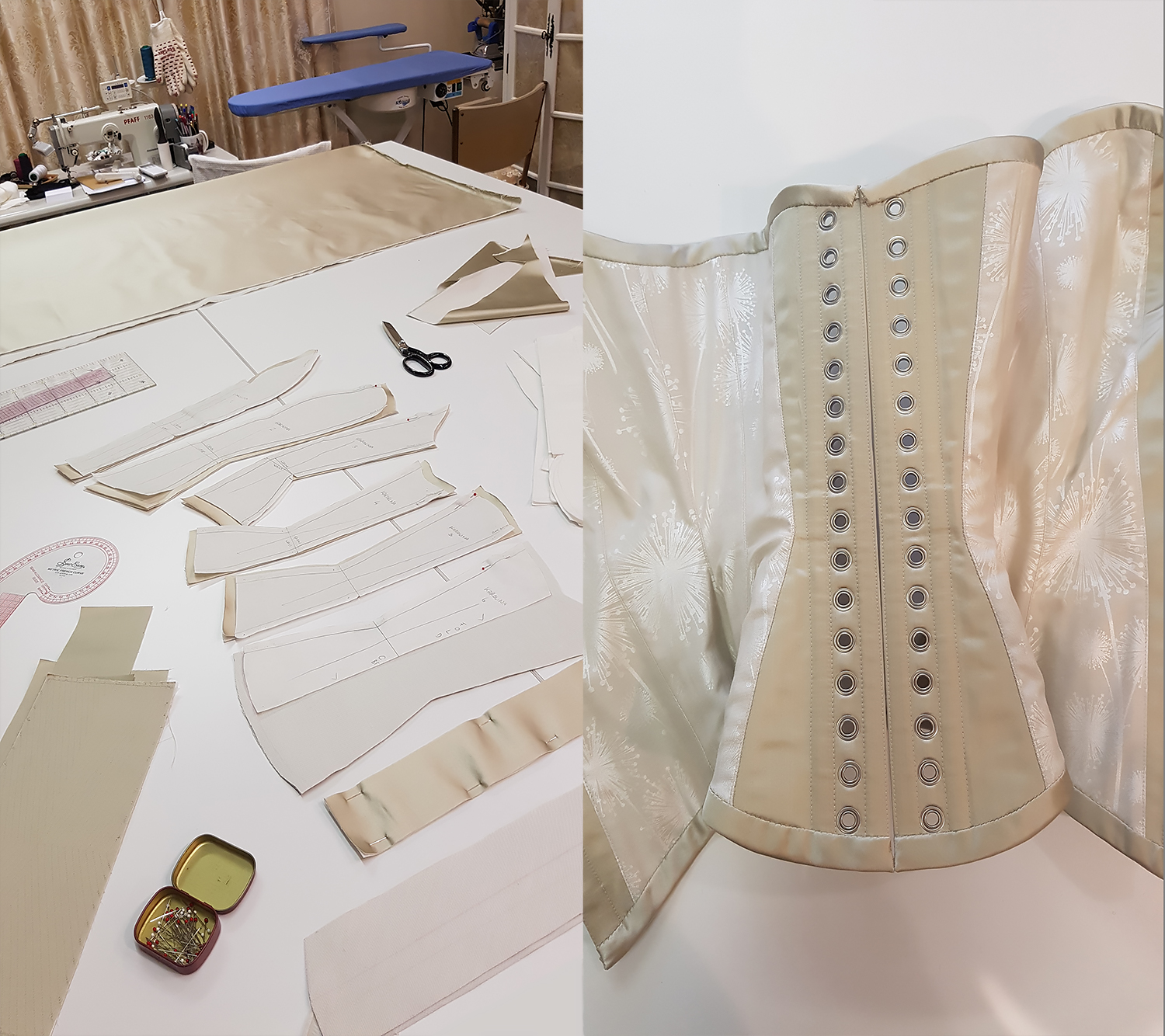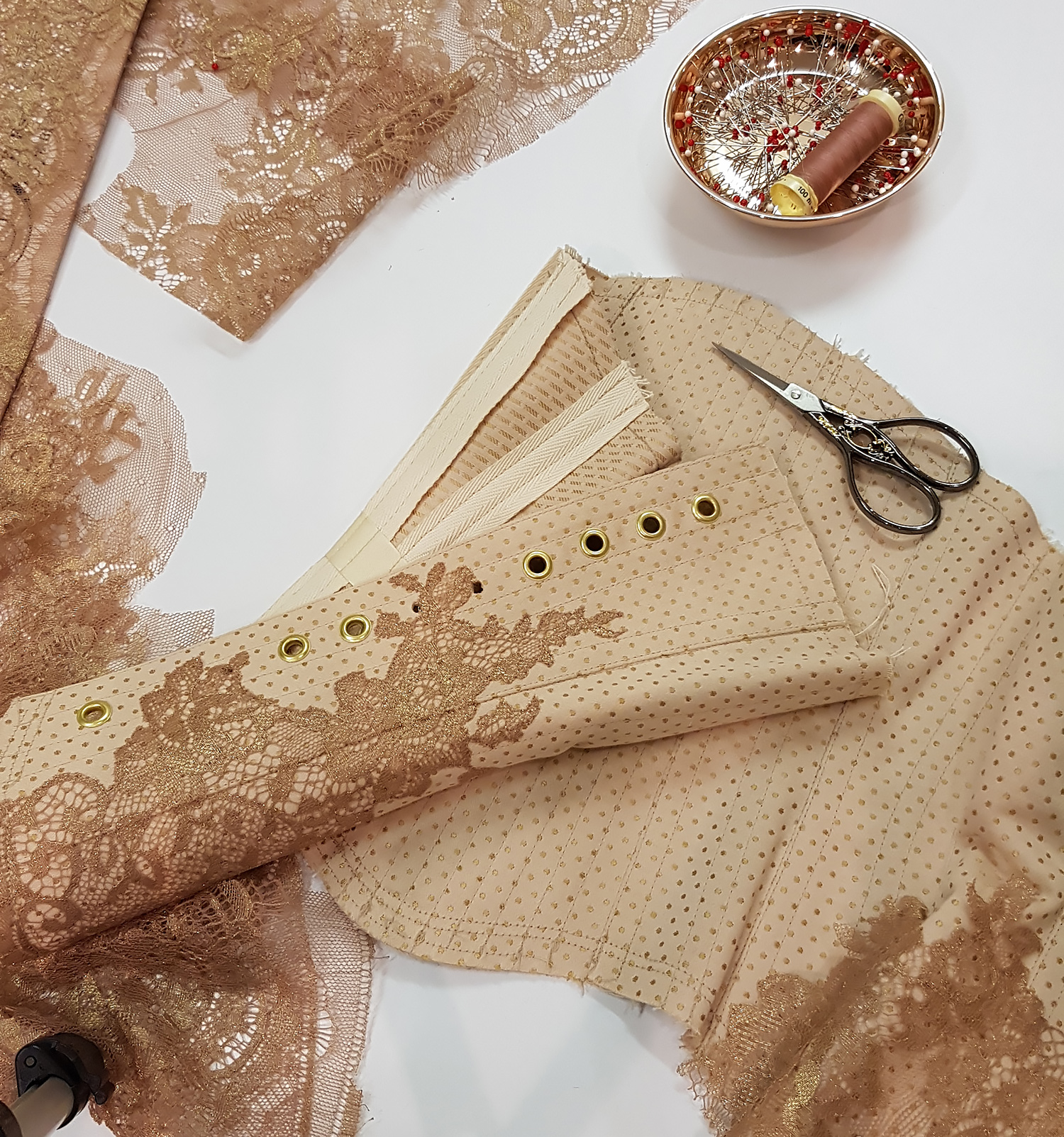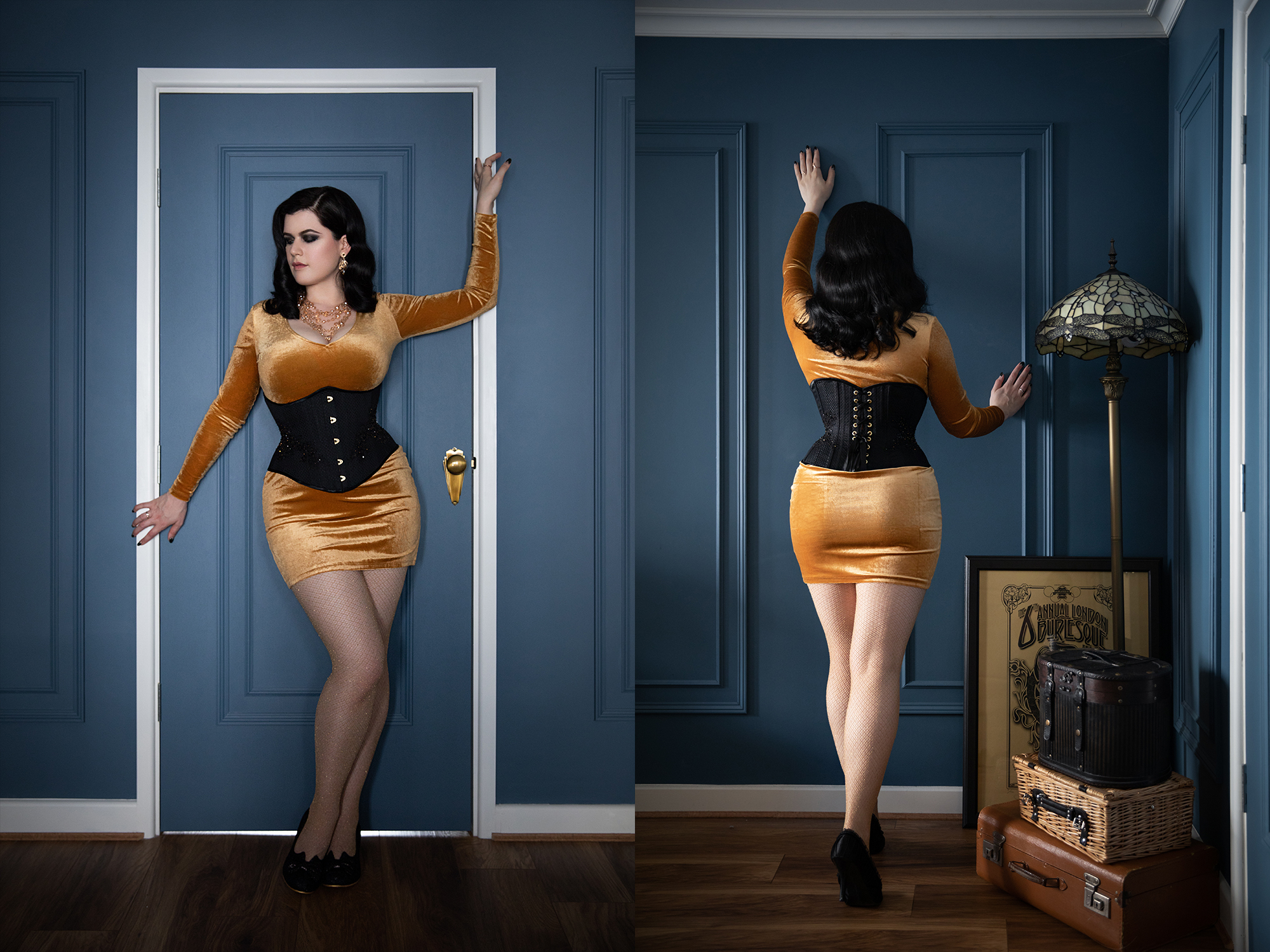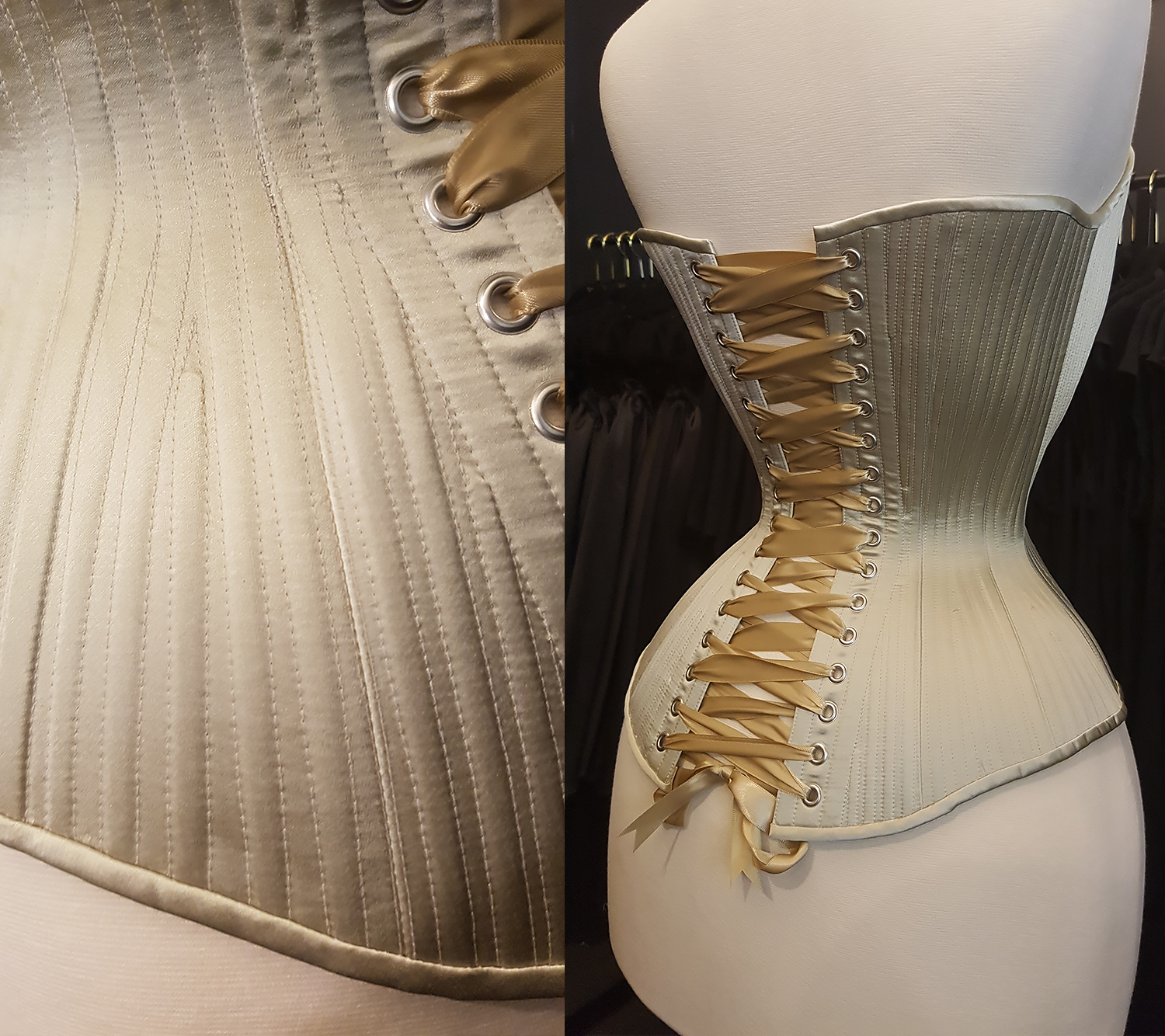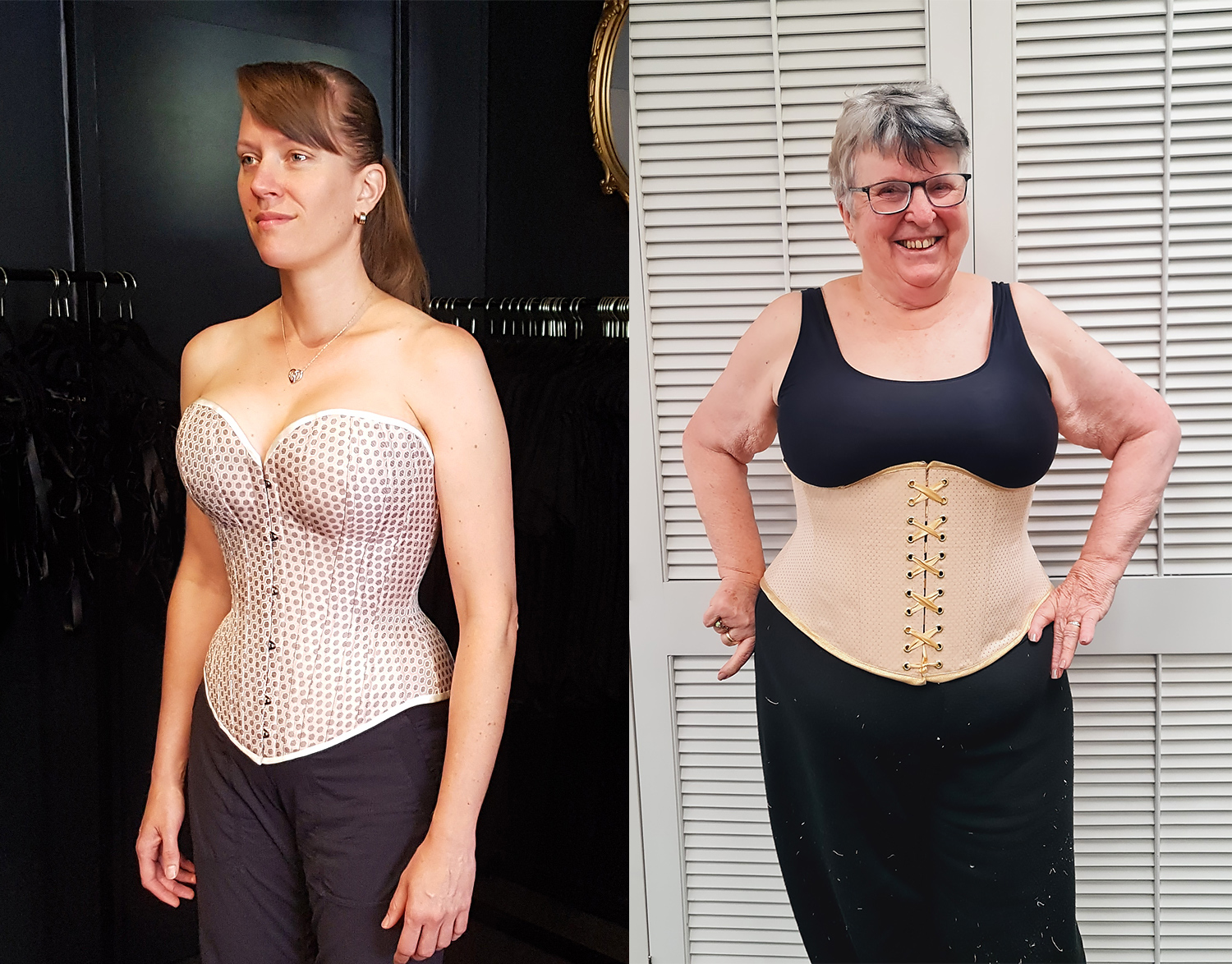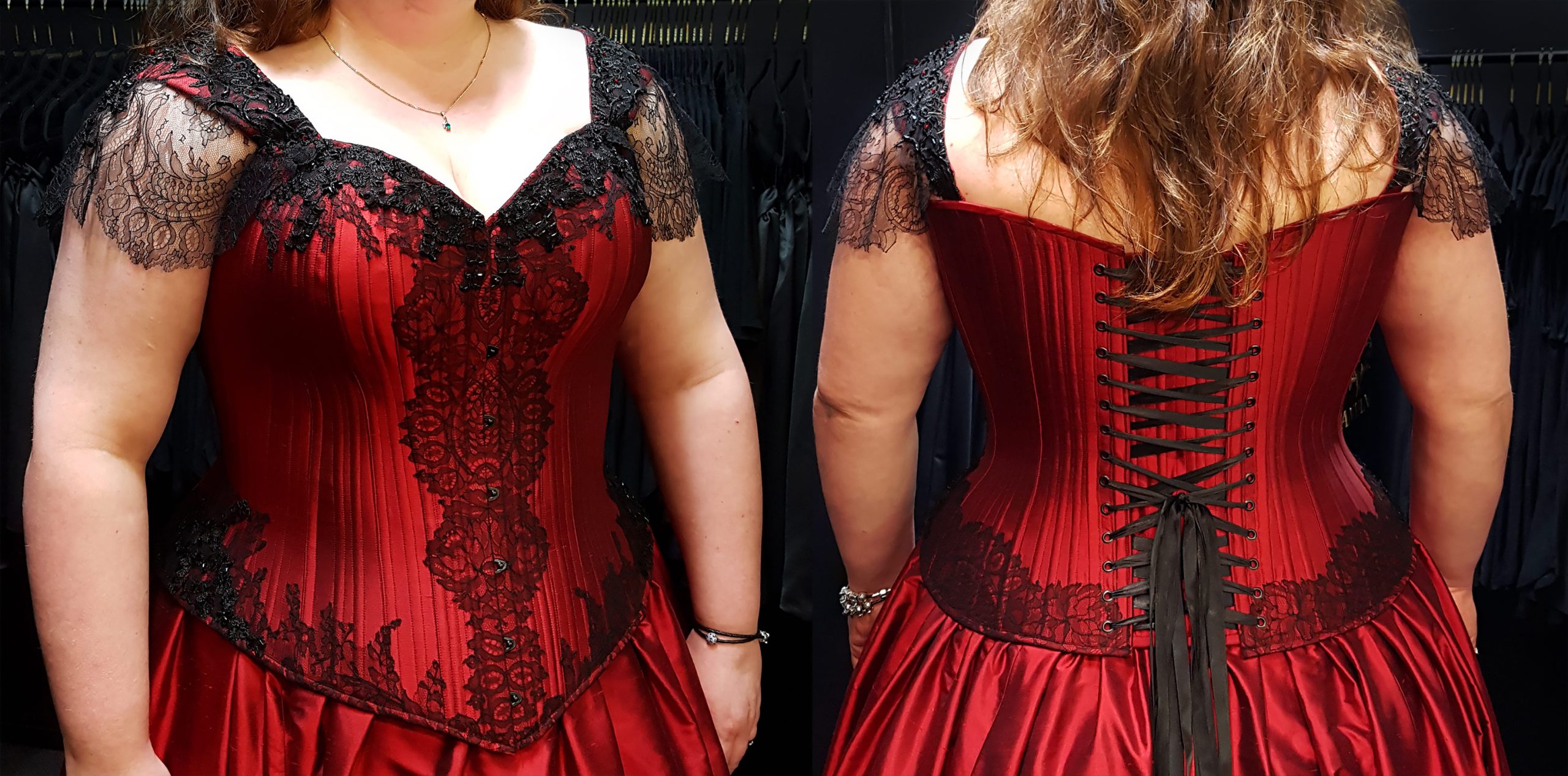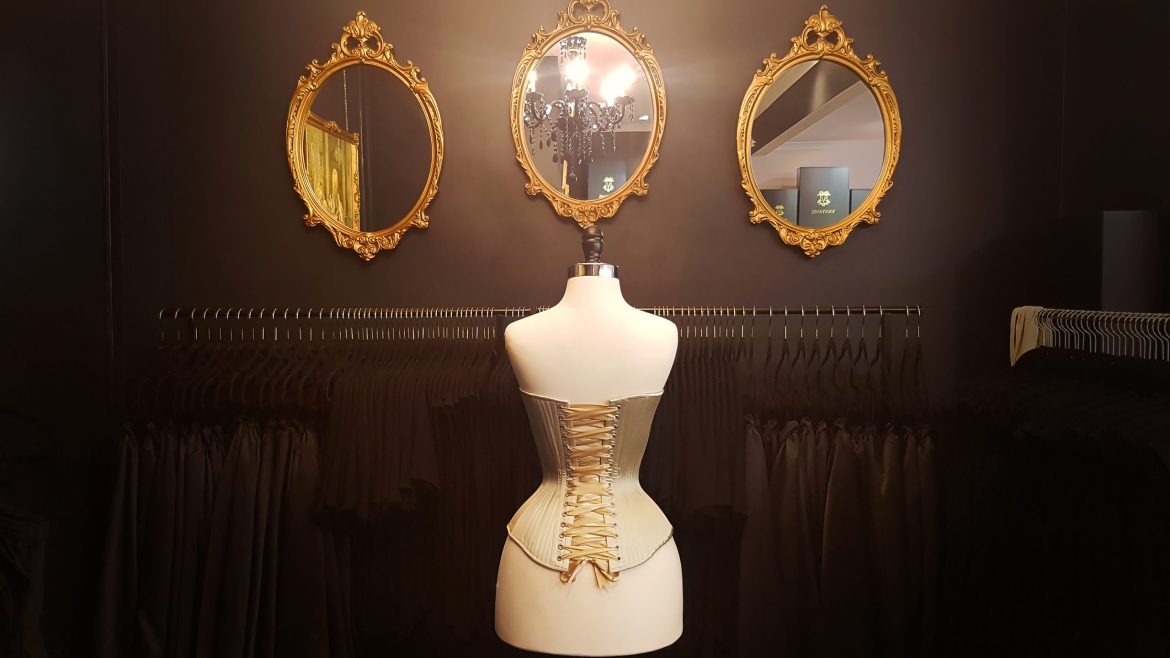
Have you ever dreamed of creating your own custom corsets that perfectly fit your unique body shape? Imagine the sense of pride and accomplishment you’ll feel when you wear a corset that not only accentuates your curves but also showcases your incredible sewing skills.
When I started my corset making journey I didn’t really have a proper understanding of how empowering developing this skill would be. The feeling of control over my figure and sense of accomplishment with my sewing ability was so world changing for me that it’s the main reason why I started teaching the subject (way back in 2014). I wanted to share the joy!
Corset making is more than just another sewing project; it’s an art form that blends creativity, precision, and a touch of history. The opportunity to master this craft opens up a wide world of possibilities. You can take charge of your wardrobe: creating custom pieces that fit your unique body, and making your own high-quality corsets (that would probably be priced out of your budget, were you to buy one from a professional maker – bespoke clothing is expensive!).
In today’s post, I’m excited to share how you too can embark on this fulfilling journey. Whether you’re an experienced sewer or a complete beginner, the path to mastering corset making is within your reach, you just need to reach out and take it. Read on and discover how you can turn your interest in corsetry into a skill that transforms not just your wardrobe but your confidence, too.
Let’s be honest—starting a new sewing project, especially something as involved as a corset, can be incredibly exciting, but also daunting. Many aspiring makers find themselves overwhelmed by the sheer amount of information available online today. Where do you even begin? What is the “right” information? What are the best materials to buy?
Corset making comes with it’s own set of terminology and specialized tools and materials. There’s a lot of things you need to learn and figure out before you can even start cutting out your fabric. This can be overwhelming – leaving you feeling stuck before you even get started. It’s easy to get caught in a trap of endless research, where what you discover nearly always seems to contradict the last thing you read. This can all be terribly frustrating and can even put some people off the topic altogether as they deem it “too hard”.
Does this sound familiar? If so, you’re not alone. Many aspiring makers share these same struggles. The good news is that overcoming these obstacles is entirely possible, and well worth the effort, and you don’t have to do it on your own – I can help.
Hi, in case you don’t know me yet, I’m Lowana, a passionate corsetiere with decades of experience in sewing, bespoke corset making and teaching.
I’ve been where you are now—excited to dive into corset making but unsure how to achieve the professional results I was dreaming of. Over the years, I’ve learned the techniques, discovered the best tools and materials (and wasted so much money on buying what I later learned, was the wrong thing), and developed a step-by-step approach that simplifies the entire process and guarantees a quality result.
Over the past decade I’ve taught hundreds of people the art of corset making and taken years off their making journeys. I’ve had the privilege of helping many people just like you, who were once overwhelmed by the perceived complexity of corset making, transform their sewing skills and create stunning, perfectly fitting corsets. My own journey has taught me that with the right guidance, making a corset is not only achievable but also incredibly rewarding (and doesn’t have to take years-and-years-and-years).
When I was starting my own corset making journey I was completely on my own. I didn’t have access to the online resource that are available today, and I was learning by trial and error, furiously studying any photo of a corset I could find in my local library, trying to deconstruct it. I initially thought making my own would be cheaper than saving up and buying one from a local goth shop (I was a teenager at the time), but hindsight is 20/20 and by the time I’d gotten good at making corsets I had probably spent enough on materials, tools and failed experiments to buy the shop!
I don’t regret my journey because it’s bought me to where I am today, but my teaching corset making was born out of a desire to provide the type of learning opportunity that would have seen me achieve the results I wanted in a much quicker timeframe, without wasting money on the wrong tools and materials.
Today, I want to share some of what I’ve learned with you, to make your own corset making journey smoother and more enjoyable than mine was.
Firstly, how do we overcome the initial overwhelm and confusion about where to start? The answer is you need to choose a first project that will set you up for success. Corset making is already complex enough, without you diving into the deep end and trying to make an advanced level corset (ie a low backed, cupped corset made with silk and lace) for your first or second attempt. Trust me, that was my mistake when I started out – I wanted to make the loud, showy thing instead of focusing on learning the foundations of good corset making.
A great first project would be an underbust corset, made using a single layer of coutil (a specialty fabric designed for corsets). This type of project will introduce you to understanding how to fit part of the torso (but leaving out the bust fit, which is its own unique challenge). You’ll learn on a shorter style of corset which uses less material and you’ll still get to figure out how boning, busks and eyelets work. Underbust corsets are easy to style under or over clothing, so there’s plenty of ways to enjoy it once you’re done. Starting with this kind of project will challenge you, but not overwhelm you, and you’ll be encouraged by your success and can build upon it with future projects.
The next thing you need to overcome that initial overwhelm is a set of clear, step-by-step instructions that break down the process into manageable tasks. Imagine having a set of methodical instructions that guides you through each stage of making your first corset, from selecting the right materials and tools, through to understanding how to fit the pattern to your body and mastering the sewing techniques to complete your corset. Not just a brief overview video on YouTube, but a proper, detailed set of instructions which leave nothing to be figured out on your own. That’s what you need to get you started – not a jumble of mismatched information from all over the internet, but a cohesive set of instructions to follow.
There are so many different ways to make a corset, and no such thing as only “one right way”. Each method will have it’s pros and cons, and different makers prefer different methods due to a variety of reasons. If you decide to take the “trial and error” approach as I did (rather than doing a structured course), I recommend trying several different tutorials from start-to-finish. That way you can work out your own preferred methods over time. So long as you like the end result, whatever method you use is “the right one” (for you). When deciding if a tutorial is right for you, look at the photos of the makers work and decide if you like what you see. If you don’t see any corsets that impress or inspire you, then don’t follow their advice. Sounds simple when you put it like that, I know. But if someone can’t “walk the walk” then they’re not going to be able to teach you properly. So, put simply – only take making advice from people whose corsets you admire.
I’m a recovering perfectionist, which has been both a blessing and a curse on my corset making journey. Each piece I made underwent scrutiny and I was constantly troubleshooting and coming up with methods to achieve perfection in all aspects of my making. I’ve since learned that there is beauty to be found in the imperfect, but that lofty goal of perfection drove my skills forward and ensured I developed a very methodical approach to each step of the process, which gave me consistent and professional results in my work. It’s these methods that I’ve been teaching for the past decade and it’s delighted me to see my students using them to great success.
By following this structured approach, you can focus on just one step at a time, building your skills and confidence as you go. You don’t need to be an expert from day one; you just need to follow the steps and trust the process.
This methodical approach not only makes the process less intimidating but also ensures that you avoid common mistakes and achieve a beautiful, professional-looking result. Let’s take that first step together and turn your passion for sewing and corsetry into a structured, enjoyable, and immensely rewarding skill.
I know what some of you might be thinking: “What if I make a mistake?” or “What if I’m too [insert whatever insecurity you might have] to wear a corset” Don’t let these thoughts hold you back!
Someone asked me recently “are corsets suitable for older, larger women?” and my answer is unequivocally yes, and yes! My corsetry students have all ranged in sizes and aged between 16 and 80, and each one has looked incredible. Corsets don’t have to be worn as outerwear – they can be worn underneath other clothing for a bit of quiet confidence, if wearing one as outerwear feels too bold for you. Every single one of my students have always glowed with joy when they’ve seen and felt their corseted silhouette. Fashion, including corsetry, is for everyone, regardless of age/gender/size. If you love the idea of wearing a corset, then wear one – your body is suited to corsetry, just as it is.
So what about mistakes? Mistakes are a natural part of the learning process. Every experienced corset maker has made their fair share of errors, and I can tell you I’ve made every mistake it’s possible to make (and many more than once!). What’s important is that you learn from them and keep moving forward. Try and reframe “mistakes” to mean “learning opportunity”, because that’s what they are. Each “mistake” I’ve made has been an invaluable lesson. If you’re able to follow a clear set of instructions with a step-by-step approach, you’ll minimize mistakes (it’s unrealistic to expect to make none) and gain confidence as you see your skills improve.
Remember, every small step you take adds up over time, getting you closer, bit-by-bit to making your own beautiful, custom corsets.
So, the TLDR recap of where to start in your corset making journey is:
- Choose a first project that will set you up for success (not an advanced, involved design)
- A great first project would be an underbust corset, made using a single layer of coutil (a specialty fabric designed for corsets).
- Use a set of clear, step-by-step instructions that break down the process into manageable tasks (not just some brief overview video that leaves a lot of gaps for you to fill in).
- Only take corset making advice from people whose corsets you admire.
- Make friends with the idea that mistakes are learning opportunities, and everyone makes them. Mistakes are our greatest teachers.
Now that we’ve discussed the initial steps of where to start, you might be wondering what comes next. In my next post, we’ll dive deeper into the transformation you can achieve through corset making and I’ll answer some more questions from the recent corsetry survey I conducted. If you haven’t already, make sure you’re signed up to my mailing list so you don’t miss the next post.
In the meantime, I encourage you to think about what excites you most about making your own corsets. Leave a comment below and share your thoughts—I’d love to hear about your goals and any questions you might have.
Xx
Lowana
Comments (2)
-
I’m coming up on being able to go part time in my career and have always dreamed of having a small corsetry business in my actual retirement. The advice you’ve given is where I’ll start. I’ve made a couple of corsets, but I think I need to go back to basics; I’ll start as you suggest with an underbust. Looking forward to hear more, I’ll use your suggestions to guide my way forward.
-
Author
I’m so glad you found my advice helpful, Lori! Yes, start with an underbust and don’t make it with a layer of fashion fabric (like satin, for example). If you focus on just getting the underbust corset made from a single layer of coutil to fit and look exactly like you want, when it comes time to introduce more complicated elements like fancy fabric, you’ll only be tackling that one new thing, not a whole jumble of challenges at once. This will really help you improve your skills. I’ll try and post again soon 🙂
-

